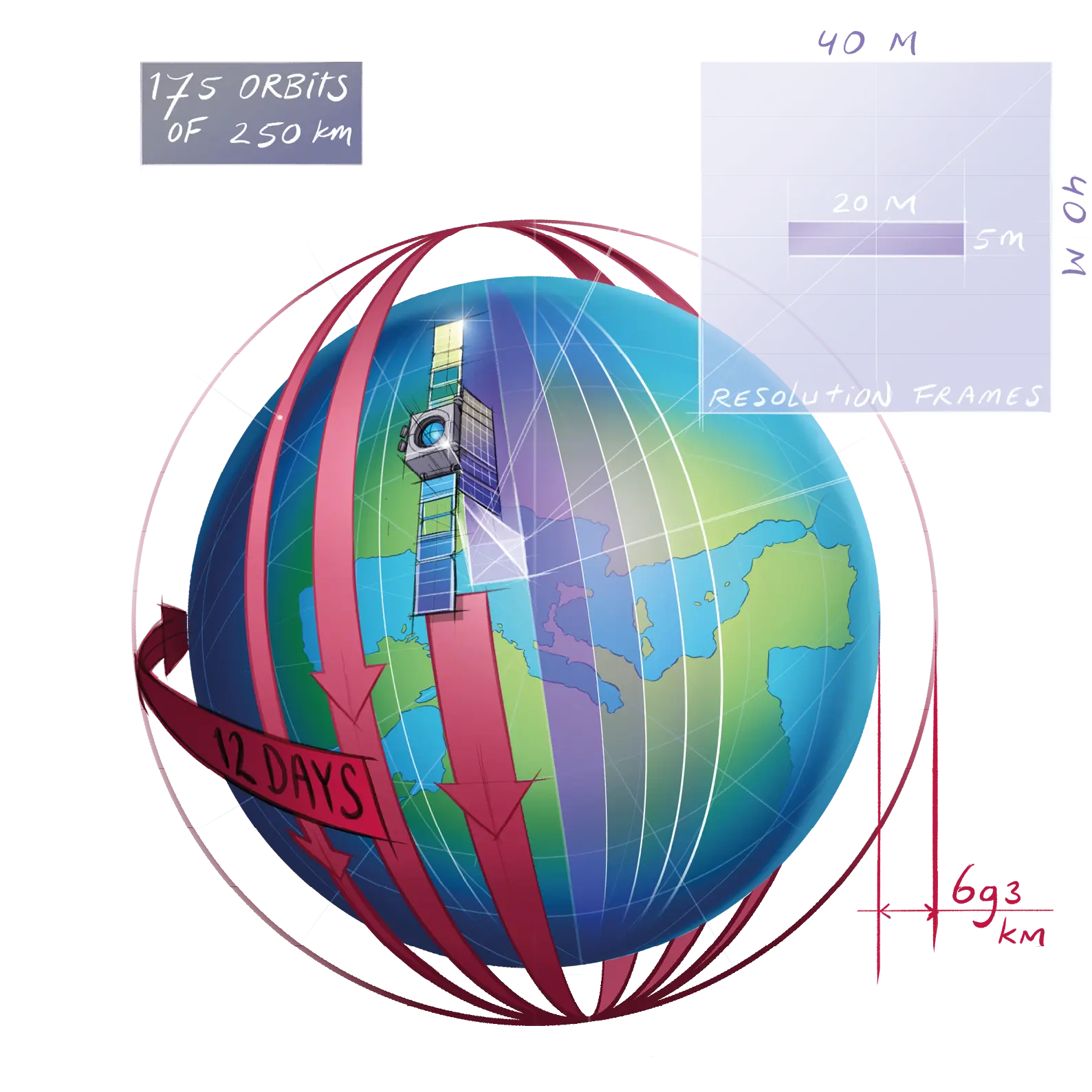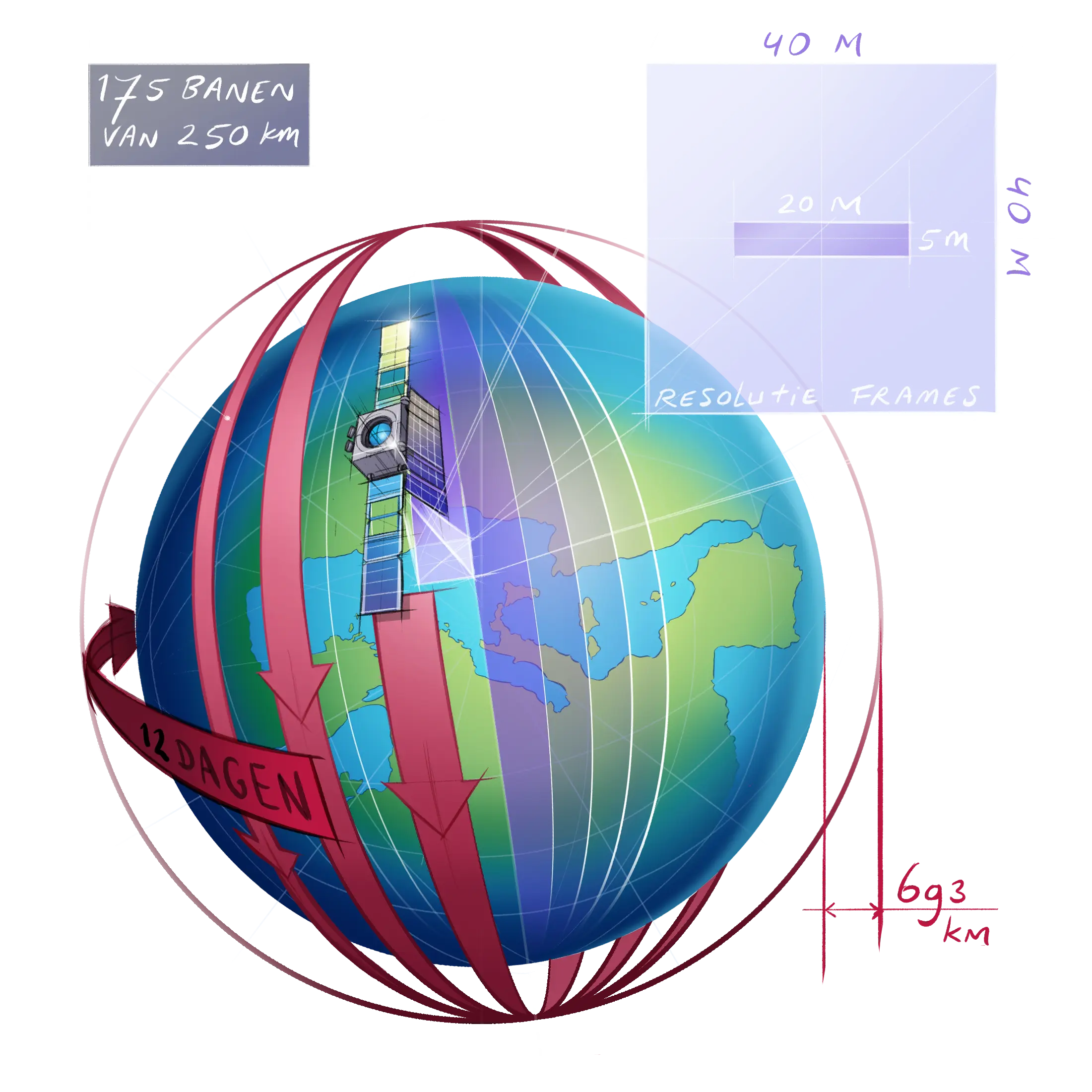Harmony satellites
observe climate processes
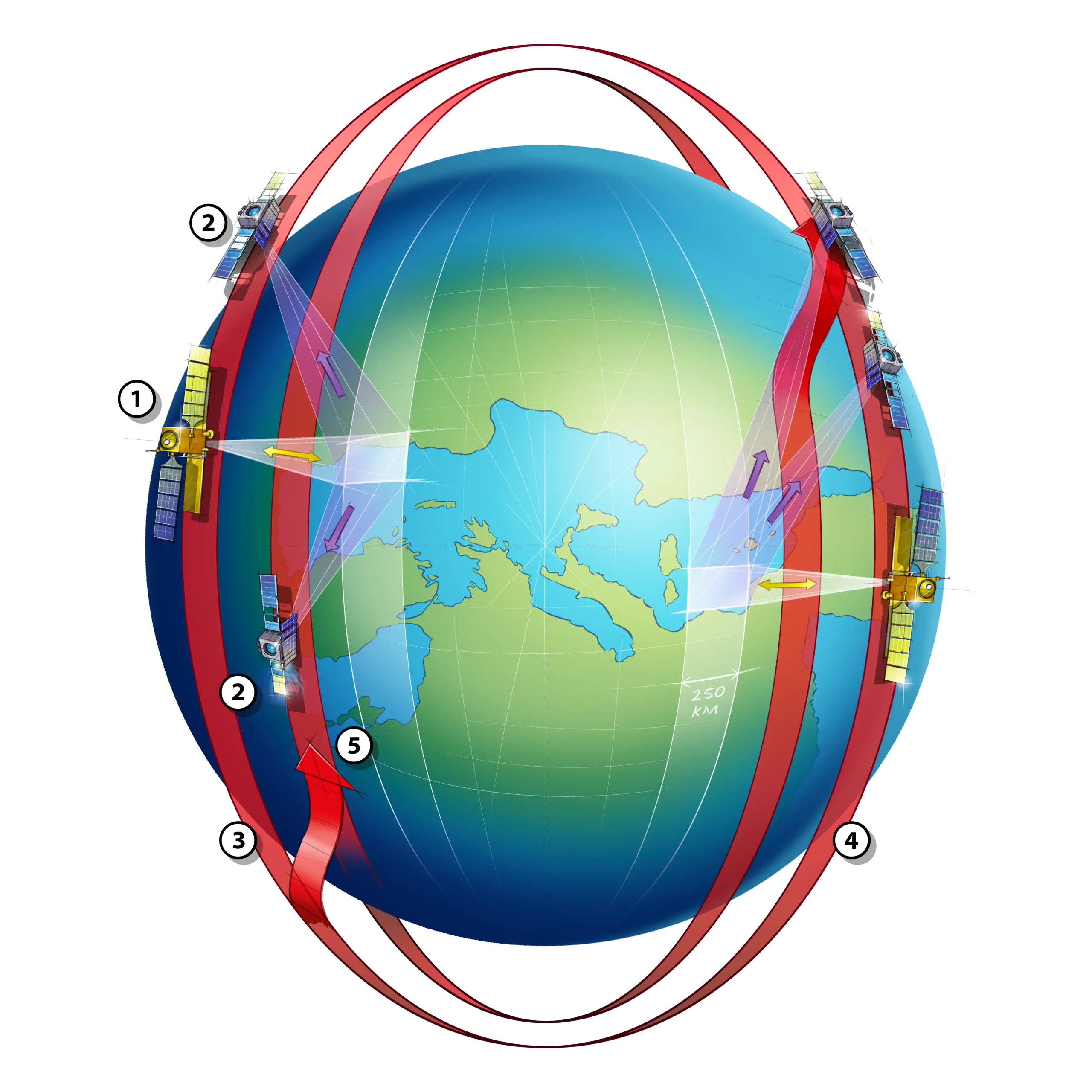
Sentinel 1 emits radar pulses, whilst the Harmony satellites 2 receive and process the reflections. They fly 366 kilometres in front of and behind the Sentinel 3, or they fly as a duo close together 4 at a distance from Sentinel. Harmony A and B can drop back down 5 into a lower orbit to catch up with the Sentinel satellite, as well as return again to the same orbit.
Detection works by way of radar interferometry – a proven InSAR (Interferometric Synthetic Aperture Radar) technique for studying slow movements on the ground. The resolution of radar lies in the order of metres (or dozens of metres), but interferometry clearly shows shifts of a few millimetres a year. InSAR is very sensitive, especially in the line of sight, more or less perpendicular to the direction of movement, in other words in the east-west and vertical directions 6. Thanks to Harmony A and B, the north-south direction has now also been added. Shifts on the Earth’s surface are therefore recorded in three directions in one go 7. For example: surface measurements of intumescent volcanoes 8 or melting glaciers 9. By combining measurements of height change and flow speed (up to metres per day), the speed of ice loss can be calculated.
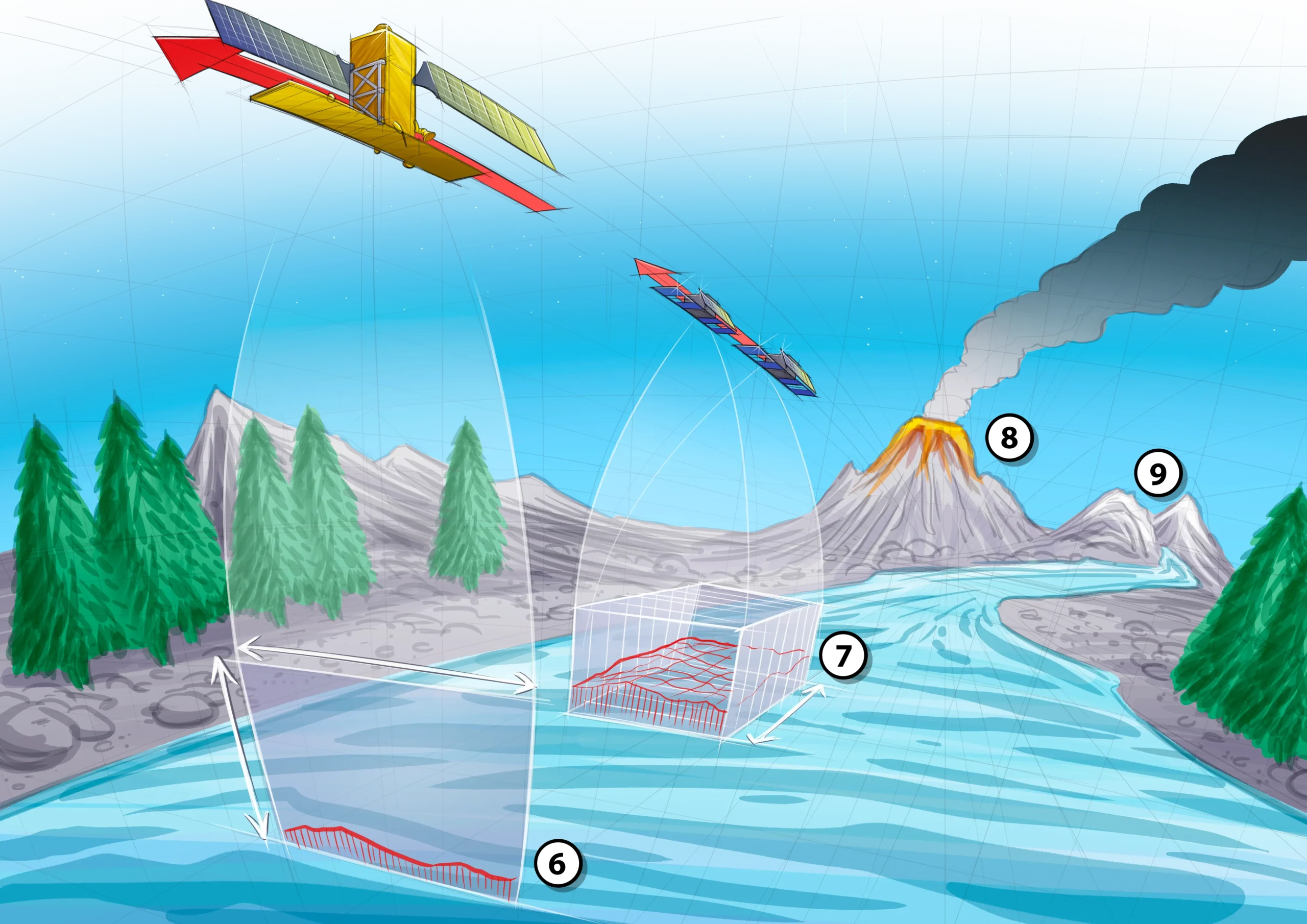
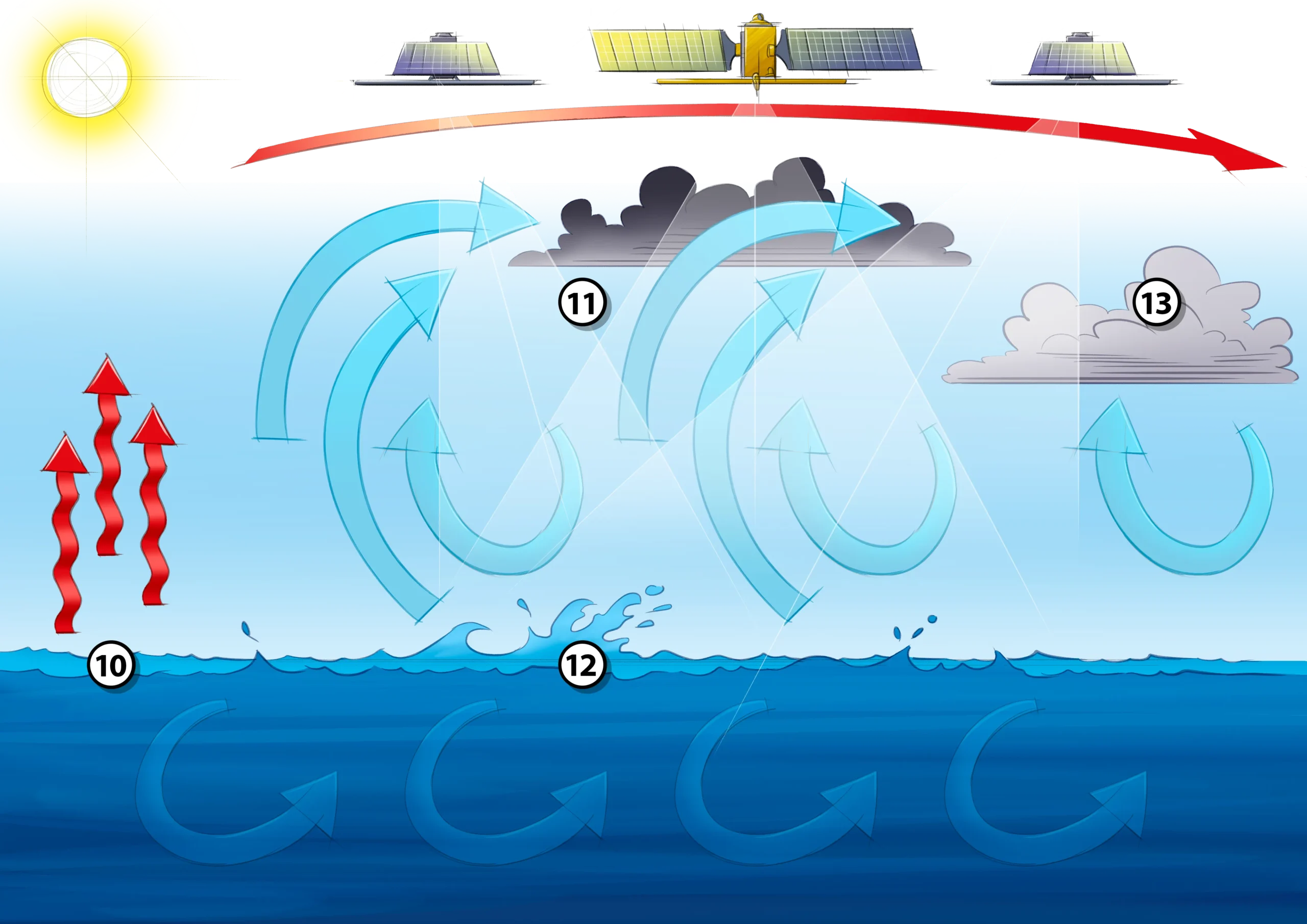
Energy exchange between the ocean and atmosphere is Harmony’s main focus. The satellite uses infra-red measurement 10 to determine the temperature of the surface water. Currents are measured with Doppler 11, as is the case with traffic controls. The dispersion is a measure for the roughness of the sea 12 and thereby for the prevailing wind. Harmony can measure both the height and the speed of clouds 13. All that data can be used to test weather models. “Our aim is to translate the exchange between air and water that occurs between 100 metres and a kilometre into parameters for climate models”, is how López-Dekker summarises the Harmony mission.

